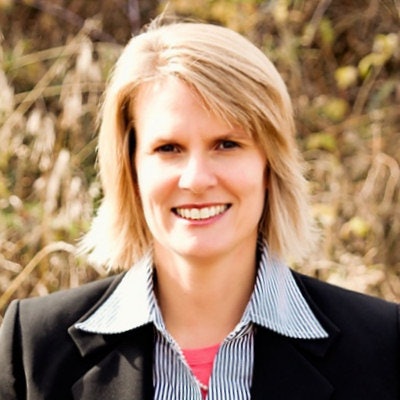
Customer service. Customer service. Oh my, if I hear that buzz phrase one more time, I may implode. In dentistry, we often refer to it as patient care, but it's still the same -- it's code for customer service.
We want to please our patients so they come back and they tell all of their friends about our practice. We want to give them the best service and patient experience in the area. I understand, but sometimes we fail because we try too hard or we do not try at all. Let me explain.
Roasting a chicken
A few weeks ago, I went into a hardware store to purchase remodeling supplies. The person at the front desk was not able to help me, so he sent me to the back of the store to get help from another person. The person in the back part of the store was very helpful and guided me to the right aisle for the needed products.
 Lisa Knowles, DDS.
Lisa Knowles, DDS.As I returned to the front desk to check out, the young man -- as if cued -- asked me "Have you ever roasted a whole chicken?"
Puzzled, I said, "Yes," and looked at my supplies wondering if I had inadvertently added a roasting pan in with my purchases. No. No roasting pan.
Maybe he was going to roast a chicken and needed my advice? But, he asked no further questions after the first inquiry. Still puzzled, I just smiled at him, and then realized he was trying to make small talk with me. After all I was a woman, and probably most women have roasted a chicken before, so this likely seemed like a good question.
I left the store, and literally laughed as I reached the outside. "What was that?" I thought to myself. That was customer service gone wrong.
Surely someone coached him by telling him to try to find a connection with the customers and talk with them a little. He tried, and that is why I did not laugh in the store. I smiled and politely paid for my supplies. But, bewilderment is not what we are aiming for when we try to help our customers or patients have a good experience while in our businesses.
Here is an example of an experience at the opposite end of the spectrum: I entered a local bread store, expecting to be greeted with the usual, "Hello. What can I help you with today?"
Instead, a new employee stared me at. Clearly, I had interrupted her bread-making process in the back, and now she had to wait on me. She looked annoyed and said nothing. I asked for my usual bread -- sliced.
Another pained look appeared on her face as she pushed the bread through the slicer. She handed me my bread. I paid for it, and then she had the audacity to say, "You have a great day." I stared at her, smiled, and said nothing.
What went wrong? The customer service was inconsistent. Most people at the store are friendly. They taught me to expect that. When this new person surprised me with the unexpected, I didn't like it.
When this new person did not show enthusiasm for helping me with my purchase, I actually felt a bad for tearing her away from her backroom duties. As a customer, I was surprised -- in a bad way -- and felt bad. Is this how we want our patrons to feel when leaving our businesses? No!
To top it off, she faked her closing words and tried to sound chipper and happy after she gave me all indications of hating her job and hating to be interrupted.
10 tips
These are just a few of many possible customer-service scenarios. In addition to being a long-time customer, I have learned a lot about customer service and patient care from being a small business brat while growing up and also from my own business entrepreneurial involvements in the last 20 years. Here are my top 10 tips for ensuring a quality patient experience every time.
“Hearing about customer service or patient care can get a bit tiresome, but its relevance is obvious.”
- Never underestimate training and development. Pair a seasoned pro with a rookie when training is taking place.
- Insist on at least one week of observation before independent project management, and provide constant supervision once the new employee begins to complete tasks independently. Consistency is comfortable and desired by patients.
- Ensure leaders provide written and verbal feedback to the new employees. Set this up ahead of time so the veteran and the new person will expect this on a daily basis.
- Give each employee an opportunity to engage in awareness training on verbal and nonverbal communication development. Misunderstood nonverbal communication is costly to our businesses.
- Hire people who enjoy their work. There is no substitute for personal passion. It's contagious and patients appreciate seeing authentically happy people do their work.
- Make the educational and learning process ongoing. Keep challenging the team to stretch beyond its comfort levels.
- Ask patients for anonymous feedback, and make sure the feedback is as unbiased as possible.
- Listen to the feedback and make changes as possible. Patients will not give feedback again if the initial feedback is not appreciated or acted on.
- Make training and development fun. Hire new outside help, or read new books about human resources development.
- Never regret the money you spend on improving your team's talent. The team is everything, and improving each person's skill set will pay off.
Hearing about customer service or patient care can get a bit tiresome, but its relevance is obvious. We have to pay attention to our patients' needs and their experiences under our care. The entire team is part of the customer and patient experience. Your team members' understanding of their training and development is paramount to the practice's success.
Lisa Knowles, DDS, practices in St. Johns, MI, and is the founder and CEO of IntentionalDental Consulting. For more information, contact her at [email protected], or visit her website at Beyond32Teeth.com.
The comments and observations expressed herein do not necessarily reflect the opinions of DrBicuspid.com, nor should they be construed as an endorsement or admonishment of any particular idea, vendor, or organization.



















